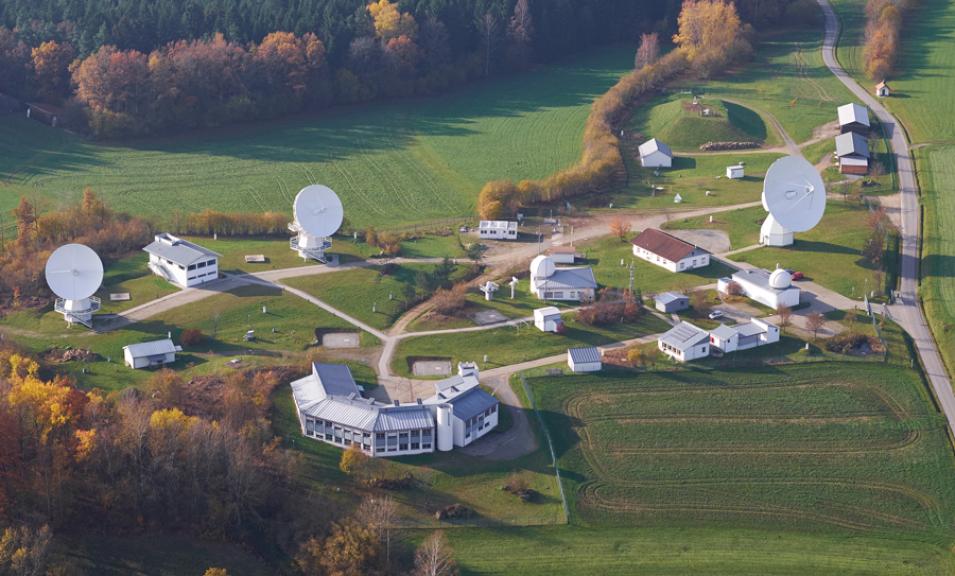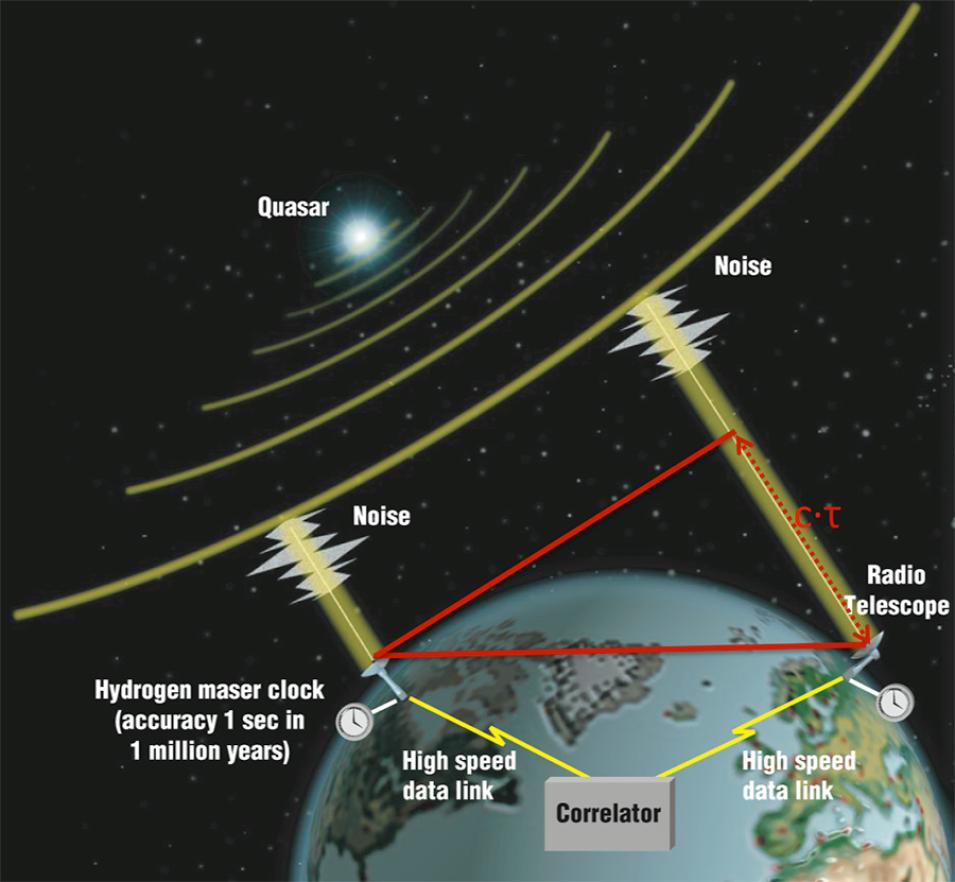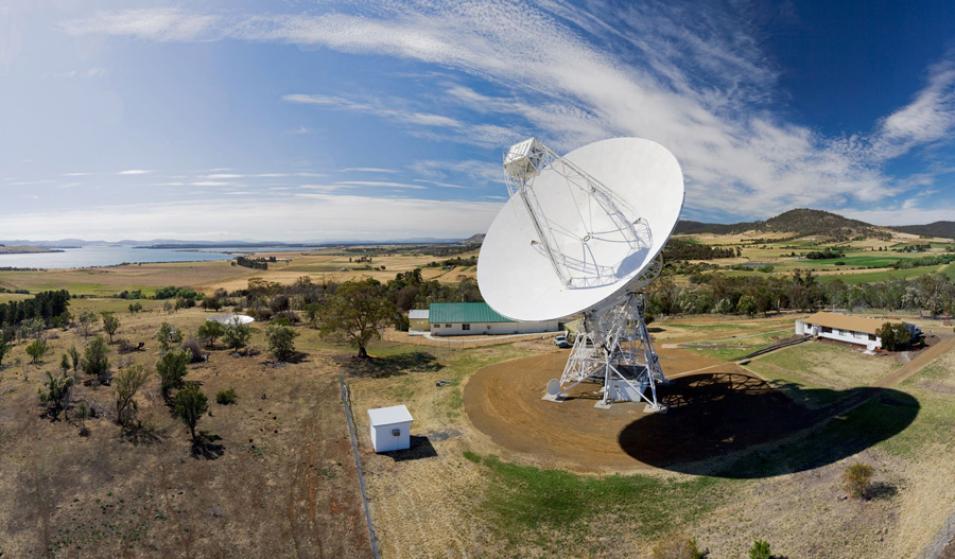Following Jansky’s discovery, researchers raced to build dish-shaped radio telescopes. Unlike tubular optical telescopes, radio telescopes cradle an antenna in a large parabolic dish, designed to channel radio waves from very specific directions—a distant galaxy, for instance. The first dish measured only 9 meters (30 feet) across. To detect more distant celestial objects, however, dishes needed to be much larger. Many radio telescope dishes are now 25 to 100 meters (82 to 328 feet) across. “The larger dishes are more sensitive, and used more for the faint sources,” said NASA geodesist Dirk Behrend. Now hundreds of radio telescopes across Earth’s surface tilt skyward, capturing a continuous stream of radio waves.
Size was not enough, however. More powerful radio telescopes were required to study extremely remote celestial objects in greater detail. So in the 1960s, researchers developed a technique called Very Long Baseline Interferometry (VLBI) to increase resolution. “VLBI is a technique where you combine the signals from multiple radio telescopes to synthesize a much larger radio telescope,” said David Gordon a radio astronomer at NASA's Goddard Space Flight Center. As radio waves from distant objects arrive, there is a time delay in a particular part of the signal arriving at one antenna versus another antenna. In that tiny delay, researchers extract a world of data. “We can measure the separation between the antennas, the rotation of the Earth, the polar motion of the Earth, the nutation, and the source coordinates,” Gordon said.
This technique permitted astronomers to study more compact celestial objects and phenomena. Through painstaking observations, researchers precisely locate cosmic sources to develop what is called the International Celestial Reference Frame (ICRF). Behrend said, “The celestial frame is based on extremely distant extra-galactic radio sources called quasars; these are remote objects, typically brighter than a billion suns, which are embedded in the center of galaxies.” Quasars are so remote that they appear fixed, making them good reference sources. “The stars around us show motion over a few years,” Gordon said. “But quasars should essentially be fixed for much longer periods of time, perhaps thousands of years.”
Researchers also use the VLBI time delays from distant fixed objects to measure ground motion underneath radio telescope sites. Continental drift causes extremely slow changes, only a few centimeters per year, or about the rate that fingernails grow. Earthquakes, however, can cause sudden changes. Precisely measuring the position of each VLBI telescope site helped develop a set of Earth-based coordinates and velocities, contributing to a terrestrial reference frame representing measurements taken at a particular point in time. In addition to VLBI telescopes, this terrestrial framework includes three other space-geodetic techniques and their instruments: Satellite Laser Ranging (SLR) telescopes, Global Navigation Satellite Systems (GNSS) antennas, and Doppler Orbitography by Radiopositioning Integrated on Satellite (DORIS) beacons.
VLBI bridges the terrestrial and celestial references frames. The telescope sites form part of the terrestrial reference frame on a constantly rotating and shifting Earth, while quasars detected by the VLBI technique help form the fixed celestial reference frame. “By observing quasars all around the sky and measuring the delays for each one of them on each baseline, you can use a method of triangulation to solve for where the quasar is, where the Earth is, what the Earth orientation is,” Gordon said.



